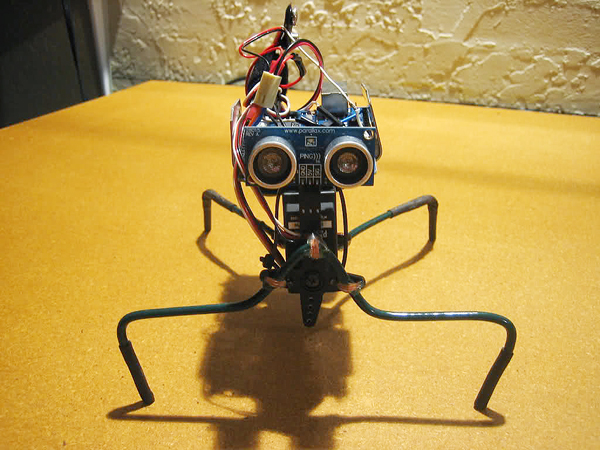March 28, 2015 is the day marked on the calendar to celebrate the Arduino Day, dedicated to the open source hardware that has revolutionized electronics. The motherboard, known worldwide for its distinctive blue color, will be 10 years old this spring. It’s been a long time since Massimo Banzi, David Cuartielles, Gianluca Martino, David Mellis and Tom Igoe began a project to teach Electronics to the students of the Interaction Design Institute Ivrea. Today, this is board is used by developers who want to undertake projects related to robotics, the Internet of Things, and wearables.
Arduino, the heart of amateur robots
There are many robotics fans using this motherboard for their experiments. One of the references for building robots with Arduino is the guide Make: Arduino Bots and Gadgets, written by Tero Karvinen and Kimmo Karvinen. Anyone willing to give it a try can download the pdf version here. It includes detailed instructions and a compilation of the material needed to create six Do It Yourself (DIY) projects. One of them is a fully autonomous robot-insect. You can see it in motion in this video, edited by Richard Stones:
The Karvinen have other books dedicated to the use of Arduino for creating robots and devices including sensors. Make a Mind-Controlled Arduino Robot, Make: Getting Started with Sensors and Make: Sensors are three publications with practical examples of the enormous potential of this hardware.
On YouTube there are many videos of robotics projects created with this open source board. There are developers who design Quadcopters (four-legged robots which are able to fly); robots that mimic Pixar’s popular character Wall-E; robots with a great movement capacity thanks to the use of wheels; those who are able to recognize the movement of a person and move mimetically, and even robotic arms made with pieces designed in a 3D printer.
Following this line of work, Arduino announced in May 2013 at the Maker Faire Bay Arena its first full robot kit, called Arduino Robot. This pack includes two 16MHz and 32 KB flash memory processors (one in each of the fully programmable boards), an LCD screen, and the Arduino IDE software. The robot is powered by four rechargeable batteries.
The project has several video tutorials, some of them starring Cuartielles, one of the founders of open source hardware.
An M&M’s vending machine
This project is a perfect example of Arduino’s possibilities. This vending machine not only distributes in cubes the M&M’s that fall through a funnel, it also classifies them by color. The device has an infrared sensor able to recognize the RGB codes of the candies. It is built with an ATmega328 microcontroller, integrated in the Arduino Uno platform. If you are a DIY fan and want to do something similar, here’s a list with all its components and their prices. It can be a fun candy dispenser at your child’s birthday party, for example.
Arduino’s telephone
The Arduino phone is not at all a cutting-edge tech device, but being able to create yourself at home something that works like a smartphone deserves great credit. In order to do this several essential components are required: an Arduino Uno platform, a TFT touch screen, a clock chip to measure time, a battery and a 3D printer to design the phone’s case. Here you can see all the components. The mobile includes its own software settings, especially useful if the user wants to install some applications. Arduino has its limitations.
A greenhouse for plants
The inventiveness within the maker’s movement is endless. A college student in New England tried to build a few years ago a greenhouse for plants with its own automatic irrigation system and temperature measuring device. A true ecological garden. Logically, the device has several sensors that are able to capture the degree of humidity and activate the irrigation system if necessary. Furthermore, the temperature and the humidity can be regulated by placing heaters and fans.
Music lovers, use Arduino
This Arduino-based device will delight music lovers, especially those who play the guitar. There are examples throughout the Internet of people who have been able to build their own electric guitar tuner. The device identifies the frequency of the audio input, and its LED lights indicate the tone of the instrument. The full list of components and the instructions to build it are available in this tutorial.
Other users have created a robotic battery which, even though it may seem difficult to believe, plays music with a certain rhythm. Besides, the compass can be slowed down or accelerated using the motors placed in the battery. In this video you can see the instrument in operation. Just watching it move is a real pleasure:
Send a tweet to have your coffee ready
One of the worldwide trends in technology is the revolutionary Internet of Things, and Arduino can be used by small hardware developers to remotely control home and office appliances. An example of this is a system that allows turning on a coffee machine using Twitter. Hence, you can send a tweet from home using your mobile device and when you arrive at work you can have fresh coffee. Note however that these solutions require more work, as they also need some programming.











